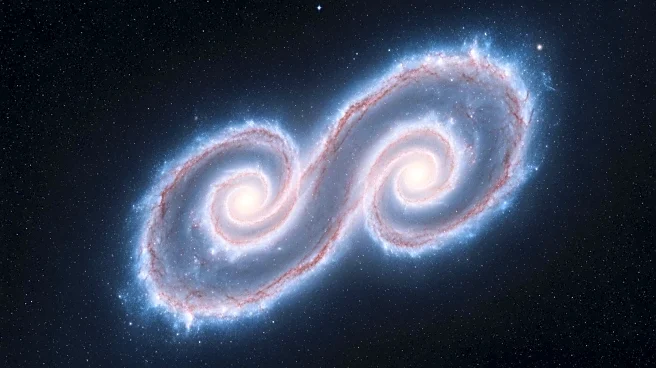What's Happening?
Jim Baggott's book 'Discordance' explores the ongoing challenges in cosmology, particularly focusing on the Hubble constant, which measures the Universe's expansion rate. Despite advancements in precision
cosmology, discrepancies persist between different measurement methods, known as the Hubble tension. This tension, along with other unresolved issues like dark matter and dark energy, suggests that our understanding of the Universe remains incomplete, prompting debates about the need for new physics beyond the standard model.
Why It's Important?
The Hubble tension and other cosmological challenges highlight the complexities of understanding the Universe's fundamental properties. Resolving these issues is crucial for advancing scientific knowledge and potentially discovering new physics. The debate over the Hubble constant's value impacts theories about the Universe's age and expansion, influencing both theoretical and observational cosmology. As scientists strive to reconcile these discrepancies, the field may undergo significant shifts, affecting future research directions and technological developments.
Beyond the Headlines
The persistent discordance in cosmology underscores the dynamic nature of scientific inquiry, where established theories are continually tested and refined. This process reflects the broader scientific enterprise, which often involves messy and incoherent phases before achieving clarity. The ongoing exploration of cosmological phenomena may lead to breakthroughs that redefine our understanding of the Universe, emphasizing the importance of open-mindedness and adaptability in scientific research.













